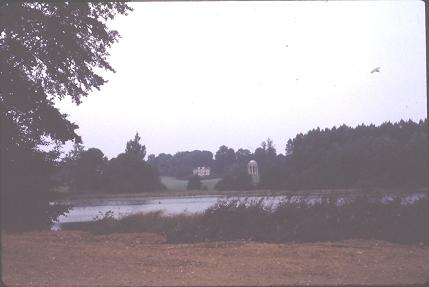- The view - the Enlightenment garden
The 'landscape garden' was supposed to look like a natural landscape, with irregular lines and wandering paths
Stowe (Buckinghamshire) - an archetypal English garden of the mid 18th century

- From view to meaning
The link between the view and its significance was now supposed to depend on the 'association of ideas', the capacity for a landscape to cause trains of thought to rise in the viewer's imagination and develop gradually following the meandering paths of the landscape (see question); it is based on the 'motion' of thought: see the text by Whateley
Thomas Whateley, Observations on Modern Gardening, Illustrated by Descriptions . London , 1770.
Ch.XXXVII. Of rocks characterised by terror.
[
] Inhabitants furnish frequent opportunities to strengthen the appearances of force by giving intimations of danger. A house placed at the edge of a precipice, any building on the pinnacle of a crag, makes that situation seem formidable, which might otherwise have been unnoticed; a steep, in itself not very remarkable, becomes alarming, when a path is carried aslant up the side; a rail on the brow of a perpendicular fall, shows that the height is frequented and dangerous; and a common foot-bridge thrown over a cleft between rocks, has a still stronger effect. In all these instances, the imagination immediately transports the spectator to the spot, and suggests the idea of looking down such a depth.